Home | Key Dates | Program | Invited Speakers | Venue | Travel Info | Accommodation | Committee | Registration
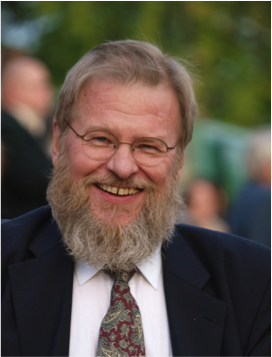
Born in 1947 I started my audio hobbies with tube amplifiers in 60’s. Germanium transistors followed and amplifier reliability improved later with silicon semiconductors. Different kinds of speaker enclosures and drivers were naturally an essential part of the life, as well as listening tests and experiences. During my post graduate studies in Helsinki Technical University, as it was called that time, the opportunity knocked in 1976 as a request to design monitoring speakers to Finnish Broadcasting, and after two years I founded Genelec with some friends. As an entrepreneur I started as a design engineer and was managing director until end of 2005. My current role as Chairman gives more time and freedom to think R&D issues again.
Evolution and history of the monitoring loudspeakers
Many kinds of loudspeakers have been used as monitoring devices in broadcasting and recording industry. This lecture discusses about the perspectives of these quality control tools, their requirements and various technical solutions, which have been applied since 1940’s until today.
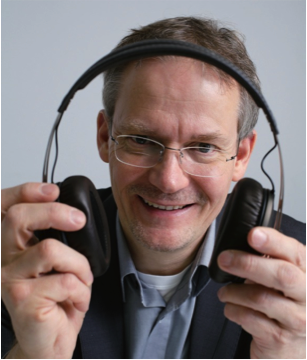
Sennheiser
Product Manager High End Consumer Electronics
My story:
I've been fascinated by technology, music and music electronics since my early childhood. I made my first recordings with a reverse driven, legendary Sennheiser HD414 headphone and built my first loudspeaker when I was 12. By the time I was 21, I had my own public address system – part of which I had built myself – and toured the country with various bands. To give me a sound basis in the audio world, I studied electronics. Right from the start of my degree, Sennheiser was my idea of a dream employer – the company’s high quality, robust microphones and headphones had won my vote when I was "on the road". After I graduated, my dream really did come true: I got a job at Sennheiser in the headphone development division. The first project I worked on was the HD580, at that time the best dynamic headphones the company had ever produced. Since then, I've played a key role in the design and acoustics of many Sennheiser headphones.
After working on the development of many different headphone models of all different sizes – from really small to very large – I specialized in the development of the core headphone component – the small speakers (or transducers).
Last year, the time had come to try something new. I changed from the technical side to the product management. There I am responsible for the growing High End portfolio which contains the best headphones and headphone amplifiers in the world.
Headphones - From Alexander Graham Bell to a mass phenomenon
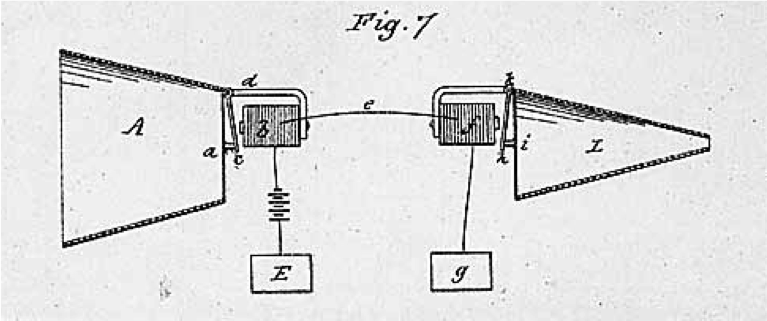 |
 |
Ten years ago the main sound reproduction device was the loudspeaker - today most music is consumed using headphones.
The progress in headphone technology was not only an evolutionary process, from time to time there where some disruptive innovations in headphone development, such as the open type headphone, that brings the tinny sound of the early days with a bandwidth of 3 octaves and distortion in the 10% range to actual High End headphones that are able to reproduces sound with a bandwidth of 12 octaves and distortion levels in the 0.01% range even at high listening levels. In addition the development of sound recording and playback devices influenced the role of headphones as a listening device.
The lecture gives an overview of the historical development of headphone technologies with their advantages and disadvantages and the relation to the development of other audio devices. The progress in sound quality will be demonstrated with audio examples.
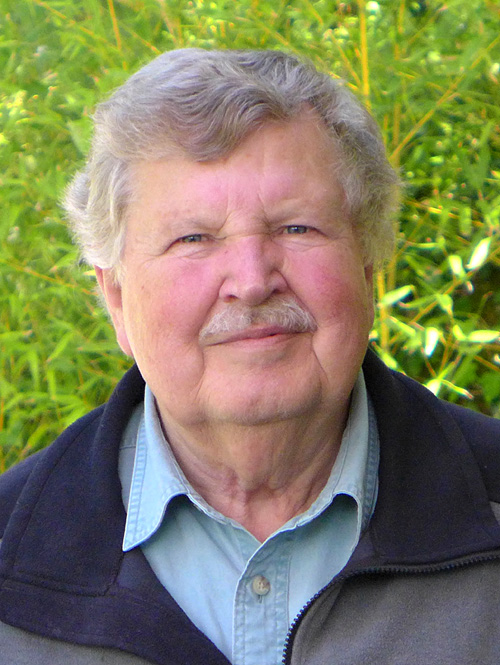
Since 1999 I have been adding information to the LINKWITZ LAB website to educate about loudspeaker design, sound reproduction and recording. I provide detailed plans for DIY construction of state-of-the-art dipole and monopole loudspeakers using active electronics. The speakers are optimized for operation in reverberant domestic spaces.
After retirement from Hewlett-Packard Co. (now Agilent) in 1998 I continued to pursue my life-long interests in audio, having designed between 1994 and 1999 a line of dipole loudspeakers with moving coil drive units for Audio Artistry. While at HP I developed the “Linkwitz Transform” circuit and earlier, in 1975, the “Linkwitz-Riley Crossover” filters out of a shared audio hobby with Russ Riley.
I worked for 37 years in Research & Development at HP, on state-of-the-art electronic test equipment, such as microwave spectrum analyzers, network analyzers and EMI receivers. I traveled, teaching HP Seminars on test and measurement in the frequency range from 10 kHz to 20 GHz. During my last 18 years at HP I also participated in national and international standards development for Electromagnetic Compatibility Test Instrumentation through ANSI and IEC/CISPR 16.
I came to the US in 1961 with my wife Eike, after having received the Diplom Ingenieur degree in Electrical Engineering from Darmstadt Technical University in Germany. I continued my education with postgraduate studies at Stanford University while working at HP in Palo Alto. We have a daughter, a son and three grandchildren.
Finding the Prototype for Stereo Loudspeakers
Stereo loudspeakers are usually operated in a reverberant environment and meant to create a phantom aural scene, a believable illusion in the listener’s mind. But what exactly must the loudspeakers and the room do to optimally support such illusion and not distract from it? Thirty-seven years of my professional life were dedicated to the development of electronic test and measurement equipment for the frequency range from 10 kHz to 20 GHz. But in terms of wavelengths this is equivalent to acoustics from 0.01 Hz to 20 kHz and many analogies. Loudspeakers always held a fascination for me and I designed, built and listened to many prototypes in a seemingly never-ending search for the ideal loudspeaker for my home stereo system. Hearing is subjective. Hearing evolved for survival in natural environments full of sounds and reflections. Aural illusions could be dangerous. My loudspeaker journey started with modification of commercial products and by questioning their design rational. From there I went to box loudspeakers of various sizes and internals, with passive and active crossovers of my own design, with spurious box radiation issues and then to various configurations of open baffle speakers with conventional piston drivers. I will talk about the progression, which in the end was all about the radiation pattern, though I did not recognize its overriding importance initially. Today I know that stereo loudspeakers must have a frequency independent polar pattern in order to create an aural scene that excludes both, loudspeakers and listening room, from attention.
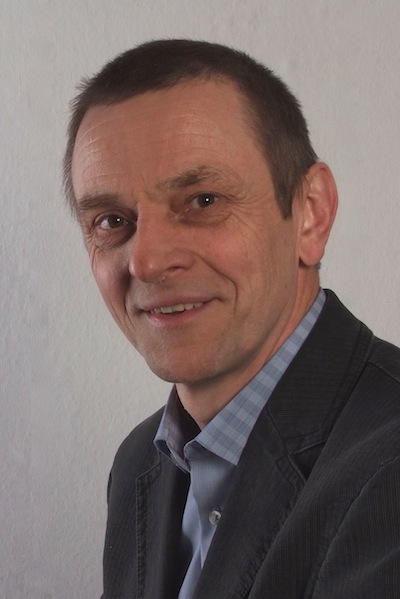
Klippel GmbH - Dresden, Germany
Wolfgang Klippel studied electrical engineering at the University of Technology of Dresden, After graduating in speech recognition, he joined a loudspeaker company in the eastern part of Germany. He was engaged in research on transducer modeling, acoustic measurement and psychoacoustics. In 1987, he received a PhD in technical acoustics. After spending a post-doctoral year at the Audio Research Group in Waterloo, Canada and working at Harman International, Northridge, CA he went back to Dresden in 1997 and founded Klippel GmbH which develops novel kinds of control and measurements systems dedicated to loudspeakers and other transducers. In 2007 he became professor of electro-acoustics at the University in Dresden. He is an AES Fellow, holds the AES publication award of 1993 and the ALMA Titanium Driver Award.
Loudspeaker Data – reliable, comprehensive, interpretable
Modern measurement techniques, listening tests, perceptive and physical modeling generate large amounts of data describing the performance of loudspeakers and other audio systems from various perspectives. The complexity of the approach, data redundancy, measurement noise and the influence of unknown disturbances complicate the interpretation and lower the practical value of the data. There is a need for technical standards defining comprehensive sets of relevant and reliable characteristics which are easily interpretable by customers and manufacturers. The tutorial summarizes the current state of this on-going process and extends the discussion to new challenges arising with the development and manufacturing of modern audio devices: The growing role of digital signal processing demands new ways of communication between transducer and DSP engineers. Smartphones, tablets, notebooks and other portable devices requires measurement of 3D sound field close to the source (near field) where the listener may be located. Nonlinear and thermal parameters have been introduced to optimize the large signal performance of transducers with respect to size, weight, cost and efficiency. Numerical modeling with lumped and distributed parameters is an important development tool but requires a close link to practical measurements to provide input parameters and to validate the results of the simulation. The detection of loudspeaker defects (such as rub & buzz) requires not only fast and sensitive testing at the assembly line but also new kinds of loudspeaker diagnostics to fix the root cause by design modification or process control. Finally the tutorial shows the need for perceptive modeling and new auralization techniques to define the target performance at the beginning of the development process to the benefit of the customer.
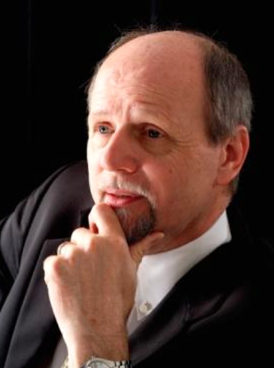
Peter Larsen, B.Sc. EE. started his career with SEAS in 1974 and was Chief Engineer for Vifa-Speak 1979-1987. Thereafter Dynaudio 1987-1990 and JBL in USA until 1993 From 1993 Peter Larsen has worked as an independent consultant for leading loudspeaker factories all over the world: Audax in France, KEF Audio in UK, Vifa-Speak and Dali in Denmark, Peerless India, Goldmax, Tymphany and Soundking in China, Apple in USA and many others.
As an independent consultant Peter Larsen has specialized in in-depth analysis of speaker design concepts and manufacturing techniques, research concerning new components and materials, advanced Acoustic Finite Element modelling, new measuring methods including a novel Rub & Buzz detection algorithm and development of several customized products.
Peter Larsen has produced many innovations and received the ALMA Titanium Driver Award in 2012. He has several patents about loudspeakers. The most remarkable being the ring radiator, which is using a new radiation principle to avoid common problems in high frequency loudspeakers.
Since 2001 Peter Larsen has developed and marketed globally special software for speaker development and design marketed under the LOUDSOFT brand. Recently acoustic measurement software for R&D and quality control has been added. The QC software is based on new principles to find the Rub & Buzz produced by mechanical defects in loudspeakers.
Designing Transducers for Compact Active Speakers
Recent shifts in the consumer marketplace are driving the development of ever-smaller loudspeaker systems. As loudspeakers and sound devices are getting pocket-sized, design cycles are shortening along with product shelf lives. Computer aided design tools offer the possibility to deal with these pressures; to develop better compact loudspeakers, and faster.
This presentation will shine a light on the total design process of developing a complete loudspeaker system using CAD tools, from motor and cone assemblies through to enclosures and crossover networks, and will reveal secrets behind solving a range of typical problems faced by loudspeaker engineers throughout the design cycle, which includes fast testing of speakers on the assembly line. An enhanced version of a proprietary algorithm has proven to be extremely effective and reliable in high speed QC testing of micro-speakers.
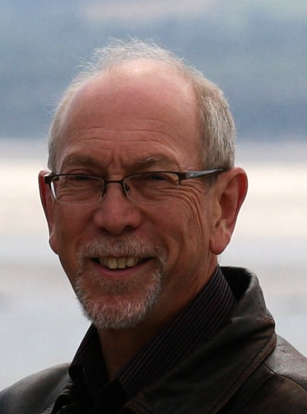
John graduated with an Honours Degree in Electronic Engineering from Leeds University followed by an MTech in Digital Signal Processing from Brunel University.
Having spent 10 years at EMI’s Central Research Labs leading a variety of cutting edge projects John changed career completely and joined Sony’s Advanced Development Group in Basingstoke pioneering digital video technology including High Definition Non-Linear Special Effects and High Definition Motion-Compensated Standards conversion.
From being head of the Video R&D Department in 1990, John returned to audio in 1993 with a new challenge as head of the newly formed Sony Pro-Audio R&D Lab, Oxford.
John left Sony at the end of June 2006, together with a colleague, Peter Eastty, having effected a spin out of the part of Sony’s Pro-Audio Lab to form Oxford Digital Limited, a company specialising in audio technology licensing and contract engineering for strategic partners.
John is a Fellow of the IET, a Chartered Engineer, a Senior Member of the IEEE and a Fellow of the Royal Television Society.
Optimizing Compact Loudspeaker Performance - the role of DSP
The form factor of all consumer devices from cell phones to flat panel TVs is shrinking and often the design is under the control of a stylist rather than anyone who understands acoustics. This, together with pressure on the Bill of Materials cost and increasing customer expectations, creates real challenges in obtaining good, differentiating audio quality in the product. DSP can mitigate many of the inherent deficiencies present. The tutorial shows how a combination of an integrated suite of audio effects together with automated frequency correction can be used to radically improve sound quality whilst providing rapid time to market.
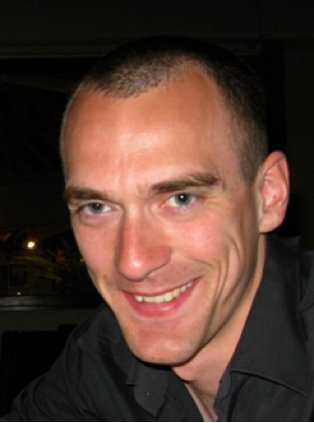
Simon Woollard graduated with a first class honours degree in Audio Technology from the University of Salford, winning the 2001 University Prize for the highest degree score in the faculty of engineering.
Simon worked for a number of years as an acoustic engineer, designing loudspeaker systems for companies including NXT, Mission and Saitek. Whilst working for Mission, Simon began to specialise in subwoofer design, working on projects including the subwoofer for the 5-star, award winning M-Cube system; a diminutive 5.1 speaker package that re-defined home cinema aesthetics and package size. At Saitek, Simon worked on one of the world’s first A2DP Bluetooth audio loudspeaker systems, the Saitek A250.
Simon’s varied engineering roles allowed him to develop broad experience in using a number of electrical and electroacoustic measurement systems, ultimately leading him to taking on a role at Prism Sound as a product specialist in audio test and measurement.
Simon spends much of his time working with clients in the field of audio design and manufacturing, both educating end users on how to analyse audio systems more effectively, and learning from their evolving requirements to help shape the future of Prism Sound’s audio measurement solutions.
Audio System Analysis - Tips and Tricks to Verify Your Designs
Active loudspeakers are becoming ever more complex in terms of their underlying architecture: The number of input interfaces has grown significantly in recent years; sophisticated signal processors have evolved to greatly enhance performance; amplifiers have grown more capable in terms of self-protection, output power and efficiency; transducers are ever-improving in terms of smoother response and lower distortion. This practical discussion will teach the audience how to take advantage of modern digital audio analysis techniques to provide far greater and more rapid insight into the performance of active loudspeakers than was previously possible with classical audio measurement techniques.
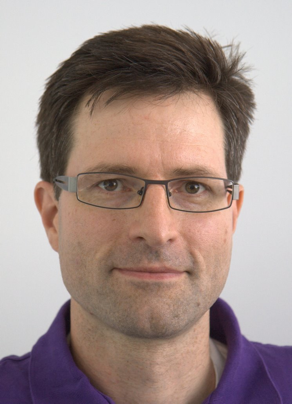
Received both his M.Sc.EE (1991) and Ph.D (1994) degrees from the Technical University of Denmark. Both Thesis works were on stability analysis and loop synthesis of high-order Sigma-Delta Modulators. He founded Toccata Technology in 1996 where he developed the world's first true digital audio power amplifier (1998) based on digital PCM to PWM conversion and a switching power stage (recognized in the Guinness book of records 1999). After Texas instruments acquired Toccata, he drove the development of the successful and market leading TI PurePath digital audio amplifier devices (TASXXXX family). He is currently serving as TI Fellow in the Audio and Imaging Products group at Texas Instruments. His research interests include digital signal processing, system-level and signal chain optimization, oversampled data converters and mixed-signal architectures. Lars holds 30 US patents.
Louder, Cheaper & Better Through System-Level Optimization of Speaker, Amplifier, Power Supply & Intelligent Signal Processing
Active speaker systems are commonly designed by choosing one component at a time (speaker, amplifier, power supply, DSP processing). Lots of design practices and standards have been built up over many years around this component-based approach. However, this leads in practice often to over- or under-design of the components of the system which impairs both performance and cost. For example, speakers are built heavy and rugged to meet standard power tests leading to poor sensitivity and linearity. The paper is looking at the un-tapped cost and performance potential in co-optimizing the entire chain by taking the system-level view. Now, speakers can be optimized for sensitivity and linearity while the intelligent processing protects it from damage and enhances the audio quality.
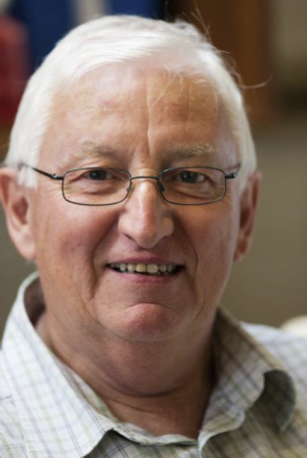
After scraping through college with A Levels in Maths, Physics & Applied Maths, Anthony started his working career as a musician. Getting involved in recording sessions, reawakened his interest in electronics. He became a recording engineer, and made a start with trying to understand the physics of sound, and - by accident - got involved with Theatre Sound Design.
In 1976, he returned to education and studied for a Degree in Communications Engineering at Plymouth Polytechnic (now a University). This was followed by work with CADAC, Melkqvist, and Det Kongelige Teater in Copenhagen. In 1983, Anthony became Head of Sound at the National Theatre in London, developing his experience with Sound Design and becoming extremely interested in electronic noise control.
In 1989, he joined CADAC to design and manufacture specialized mixing consoles for live theatre and touring. Putting computers inside analogue systems meant that techniques had to be developed to mitigate the conducted and radiated emissions from the high speed digital electronics. He has been involved with EMC regulations and design techniques ever since.
Audio Power Amplifiers; EMC Best Practice Revealed
We are now almost completely reliant on cell phones, computers and digital control systems in our homes and workplaces. This has changed the environment around our high performance audio systems completely. To ensure that the sound quality of our products is unaffected, we need to learn how to use interference mitigation techniques that are alien to our audio design experience. Regulations, like the EU's EMC Directive, turn out to be a great help with interference control and maintaining high performance characteristics.
